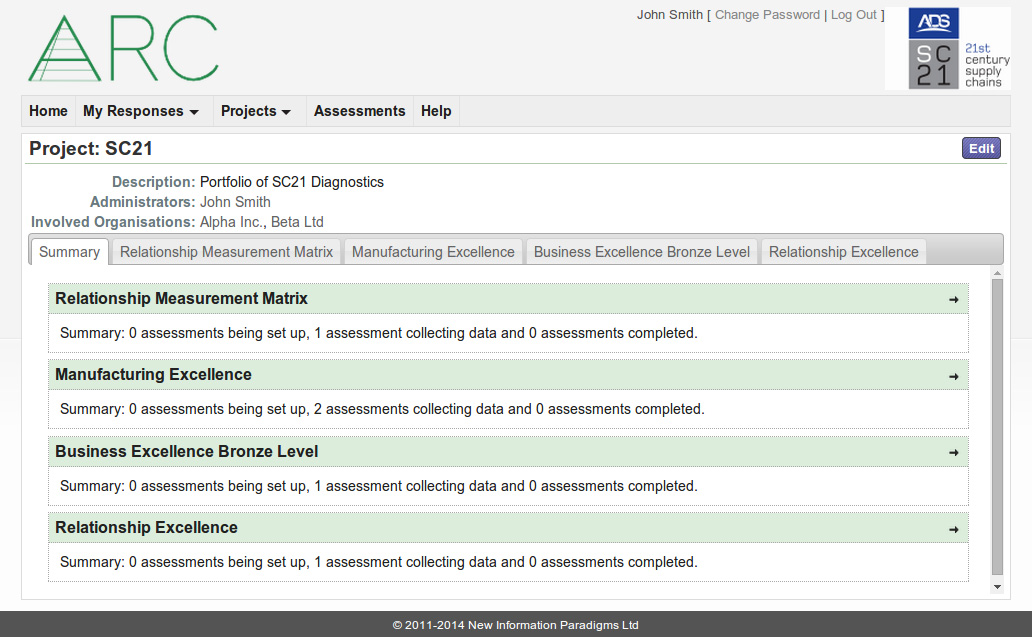SC21: 21st Century Supply Chains
We provide expert diagnostic and action management support for each step organisations take on the SC21 journey.
|
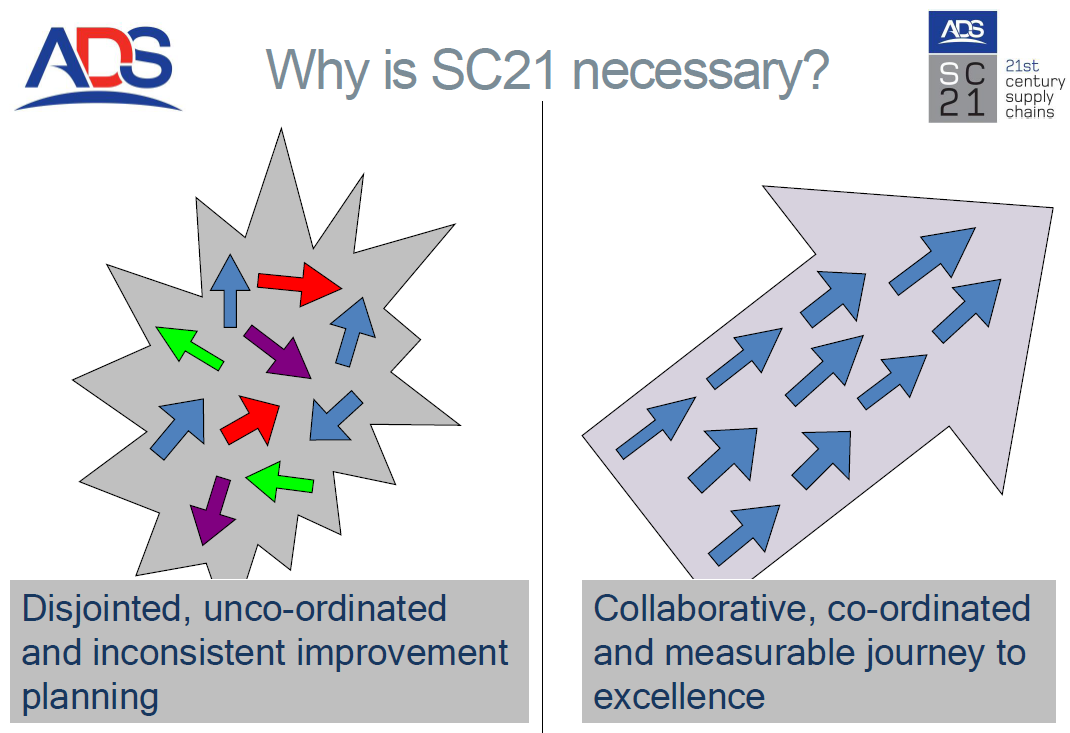 |
Code of Practice
The Code of Practice underpins SC21. It broadly consists of the following five elements:
- Communication.
- Through-life capability management.
- Continuous improvement.
- Commercial agrements.
- Ethical practices.
Get in touch to discuss a free introductory Code of Practice self-assessment and certificate of completion.
Delivery and Quality Data
Each of the diagnostics and tools below are not only designed to improve Delivery and Quality, but also to ensure that you are measuring the right things.
Diagnostics
In addition to making the official SC21 Diagnostic Tools truly accessible and scalable, we can provide expert advice on precisely how to use each diagnostic appropriately to your specific situation. We also offer a number of other highly complementary diagnostics and support services.
RMR - Relationship Management Review
The Relationship Management Review (RMR) uses a 5-section 18-parameter diagnostic tool to establish the state of a business-to-business (B2B) relationship and to surface any issues or opportunities that need addressing.
.png) NIP’s ARC RMR Service encapsulates and builds on the RMR process – automatically distributing, managing and analysing responses – eliminating the admin burden so that time and attention can be better focused.
NIP’s ARC RMR Service encapsulates and builds on the RMR process – automatically distributing, managing and analysing responses – eliminating the admin burden so that time and attention can be better focused.
The RMR diagnostic can be used to:
- Establish current relationship performance levels.
- Identify gaps in perception.
- Surface related supply chain and customer issues.
- Manage relationships as a ‘portfolio’.
Unlike the old Excel-based process, NIP’s ARC RMR Service enables the diagnostic to be used on a much larger scale and in different ways, depending on the current area of focus:
- Key relationship engagement – focus on a small number of individual relationships.
- Red-flagged relationship engagement – focus on the quick wins in failing relationships.
- Voice of the supply chain – focus on one-sided feedback from any number of suppliers and the specific issues and general patterns that emerge.
- Voice of your customers – focus on one-sided feedback from any number of customers and the specific issues and general patterns that emerge.
- Relationship capability – focus on introducing the terminology and concepts, and assessing current capability and ability to perform.
- 30 minute RMR – if everyone is already in the room (e.g. at an account meeting or conference), request the feedback and get the reports and analysis immediately.
BusEx - Business Excellence
Business Excellence (BusEx) is a 9-section 44-parameter diagnostic tool, based on the EFQM Excellence model, and is typically completed by a number of participants, to establish the readiness of an organisation’s capacity to deliver results.
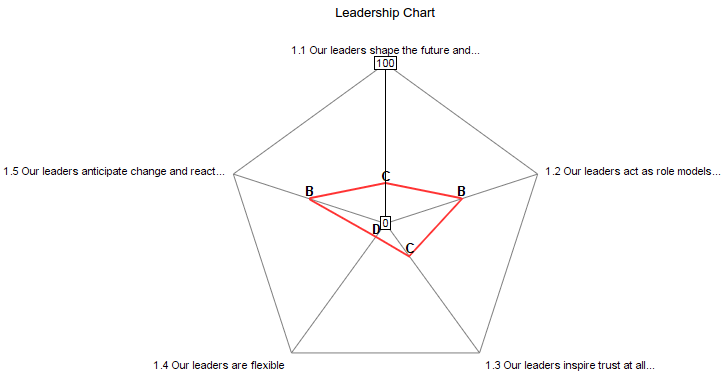
Answers questions like:
- “Where should we focus (improvement) attention?”
Functionality:
- Web-based managed service
- Participant invitation and progressing
- Target setting option
- Optional anonymity opt out
- Capture of parameter scoring and related issues
- Reports updated in real-time
- Consensus management
*Subject to 35.00 Euro charge to EFQM for Determining Excellence
Management Commitment
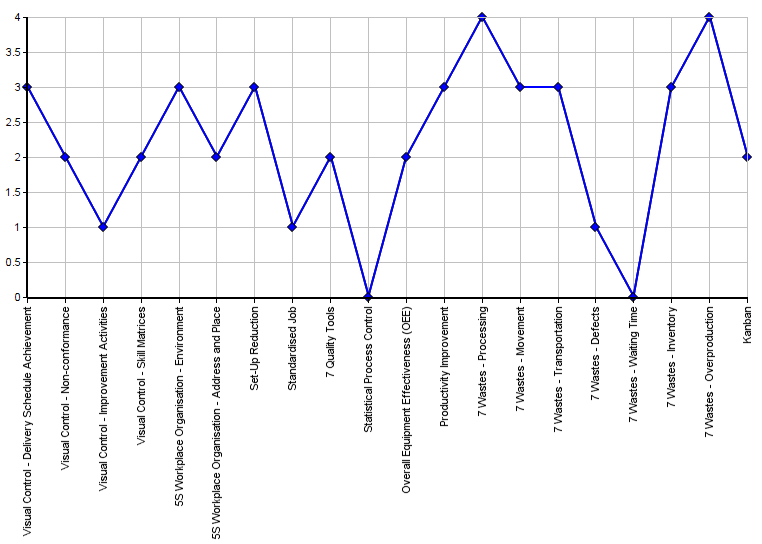 Management Commitment is a 4-section 23-parameter diagnostic tool, based on the EFQM Excellence model, and is typically completed by a number of participants. It establishes the managerial processes which enable a LEAN approach within an organisation.
Management Commitment is a 4-section 23-parameter diagnostic tool, based on the EFQM Excellence model, and is typically completed by a number of participants. It establishes the managerial processes which enable a LEAN approach within an organisation.
It assesses how an organisation’s senior management team is enabling LEAN and driving business results across boundaries – including with customers and suppliers.
There are 2 available methods:
ManEx - Manufacturing Excellence
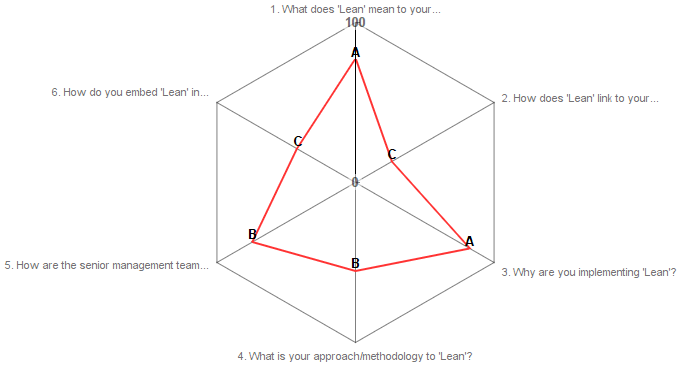 Manufacturing Excellence (ManEx) is based on core LEAN tools and techniques, drawing on the EFQM Excellence model. It is typically completed by a number of participants on a manufacturing cell by cell basis.
Manufacturing Excellence (ManEx) is based on core LEAN tools and techniques, drawing on the EFQM Excellence model. It is typically completed by a number of participants on a manufacturing cell by cell basis.
The diagnostic establishes the readiness of an organisation to apply LEAN internally and drive business results across organisational boundaries.
RelEx - Relationship Excellence
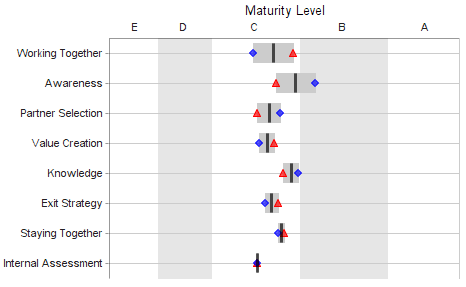 Relationship Excellence (RelEx) is an 8-step diagnostic tool, modelled on the BS11000 Standard and typically completed by a number of participants. It establishes the readiness of an organisation to engage in collaborative working relationships/partnering arrangements.
Relationship Excellence (RelEx) is an 8-step diagnostic tool, modelled on the BS11000 Standard and typically completed by a number of participants. It establishes the readiness of an organisation to engage in collaborative working relationships/partnering arrangements.
RelEx answers questions like:
- “How can we introduce a larger number of suppliers to the concept of collaborative relationships?”
- “How can we engage with more suppliers, more appropriately and more constructively?”
- “What do our suppliers think of themselves and their capability to have constructive relationships?”
- “Where should we focus (improvement) attention across our supply chain?”
- “What competencies and behaviours do I need to develop in my team and my suppliers?”
Portfolio Positioning
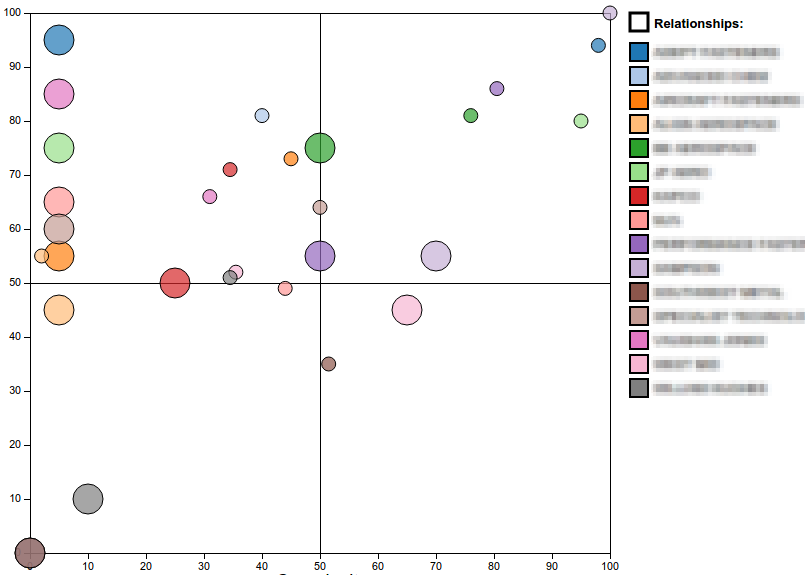 Whether it’s the whole business, specific departments, projects or products, you need to be clear from the outset what it is you are applying SC21 principles to.
Whether it’s the whole business, specific departments, projects or products, you need to be clear from the outset what it is you are applying SC21 principles to.
In particular, which relationships (customers, suppliers, alliances, etc) are you already actively engaged with? Which will you prioritise from within this “portfolio”? Do you need to change how you engage with any of them? How will you organise – or “segment” – them to ensure you take the appropriate approach?
The quick and “standard” solution is to pick your “Top 5”, but we can help anyone that wants to go beyond this, and that:
- Wants to get a better idea of what their portfolio really looks like (of suppliers, customers, projects, actions, etc) .
- Needs to segment their portfolio in order to apply SC21 principles in more situation-appropriate ways.
Action Management
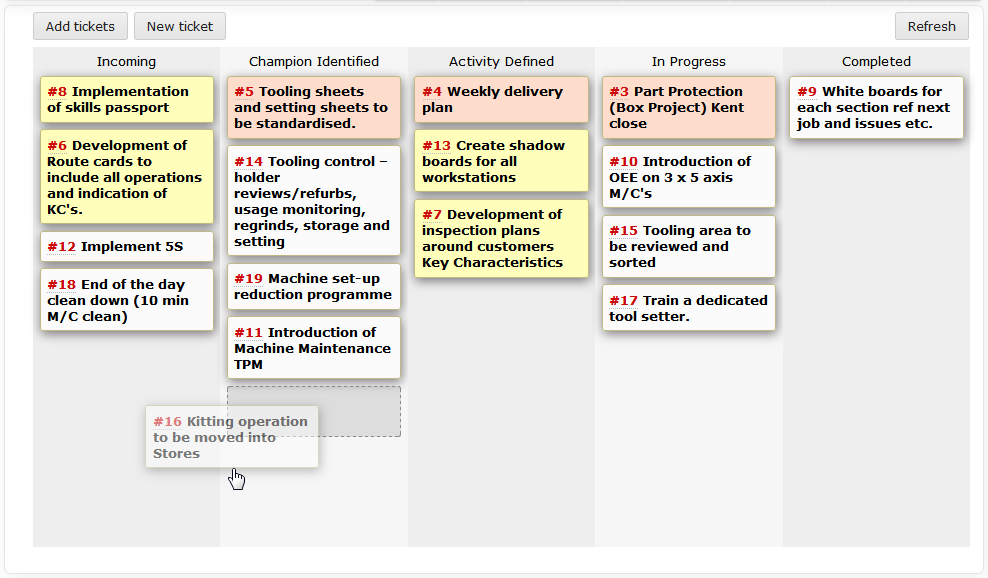
Delivered as online Kanban board(s) for accessing, prioritising, managing and progressing improvement actions. Can be offered standalone, or in conjunction with other SC21 diagnostics.
Action Management Kanban boards may be automatically updated with comments and suggested improvement actions from related SC21 diagnostics. Actions can then also be traced back to a particular diagnostic, question, or respondent.
Though individual boards might all feed a ‘Master Actions Register’, we have standard configured templates for:
Continuous Sustainable Improvement Plan
SC21 requires signatories to develop and progress a Continuous Sustainable Improvement Plan (CSIP). Comments and suggested improvement actions from any/all of the SC21 diagnostic tools can be added (or even imported automatically) to the Kanban board.
Supplier Development Plans
SC21 encourages signatories to develop and progress a ‘Supplier Development Plan’. Comments and suggested improvement actions from the SC21 diagnostic tools (particularly the RMR and RelEx) can be added (or even imported automatically) to the Kanban board.
Action plans may be ‘tagged’ with the specific supplier they relate to, so that they may be seen in the context of all general supply chain development and/or on a dedicated supplier-specific board.
Relationship Management Plans
Actions relating to a specific relationship (Customer, Supplier, Alliance etc) – possibly following RMR activity – may be drawn together to form a Relationship Management Plan.
Actions on a Relationship Management Plan Kanban board may be optionally shared with the other party to the relationship – enabling a truly ‘Joint Relationship Management Plan’ to develop. Actions assigned to people on either side of the relationship can be managed and progressed in this ‘shared space’.
Risk Register
All organisations are susceptible to risk, and SC21 recommends an analysis of risk – and a plan – to cover awareness, mitigation and avoidance.
A Risk Register Kanban board acts as a central repository for all risks identified by the organisation and, for each risk, includes information such as source, nature, treatment option, existing counter-measures, recommended counter-measures and so on.
Get in touch if you would like to know how this can all fit together, or if you are just looking to find the most appropriate place to start.
